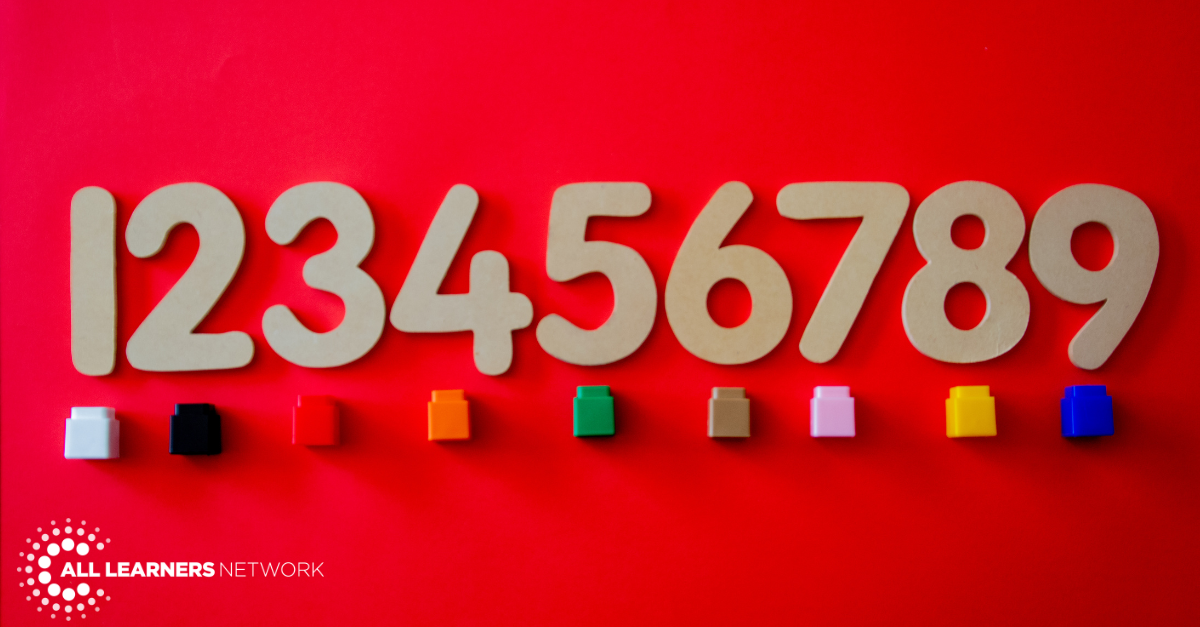
What is Number Sense?
Published: May 31, 2024
As educators, we all know how important it is for students to have a strong number sense foundation. But- what exactly IS number sense? And- how do we recognize number sense in our students?
One clear thing is that number sense is complex. While there are many resources out there to help you learn more about this idea, we will highlight a few that have helped to guide our approach to teaching number sense.
In the article “Teaching Number Sense” Hilde Howden says “Number sense can be described as a good intuition about numbers and relationships. It develops gradually as a result of exploring numbers, visualizing them in a variety of contexts, and relating them in ways that are not limited by traditional algorithms…”
Number sense is developed gradually through the different experiences students have. Students need to have the opportunity to regularly explore numbers in various ways for them to develop this skill. Number sense cannot be taught or learned in one lesson or in one grade level. Number sense is developed by constant exposure and opportunities to explore numbers in different ways.
HOW DO YOU RECOGNIZE NUMBER SENSE IN STUDENTS?
Not only is it important to provide students the opportunity to develop number sense, teachers also need to be able to recognize whether or not a student is demonstrating or growing a strong number sense.
Our facilitators have worked with hundreds of teachers and thousands of students over the past two decades. They have developed a keen sense of identifying when a student is developing number sense. Below are multiple ways in which our facilitators typically see number sense in action when they work in schools and classrooms.
Students who have a strong number sense:
- make sense of numbers and can be seen using what they know about number relationships (i.e., comparing magnitude, ordering, and sequencing) and applying it their real world situations.
- are flexible thinkers and have multiple strategies (from frequent investigations and explorations) to solve a problem and can choose the most efficient for them based on the context or numbers in a problem. They don’t rely on memorization.
- use models to make sense of and share their thinking.
- can solve problems mentally.
- can explain their thinking and make sense of others’ strategies.
- assess their problem solving for reasonableness regularly and with purpose.
This is not intended to be an exhaustive list of skills where students must check every box in order to “have number sense,” but rather to illustrate some of the characteristics that you will see develop in students as their number sense grows.
The first part of our All Learners Network (ALN) Lesson Structure is Launch. In Launch, we use number sense routines that help students build all of these skills over time. This is why all the number sense routines we use are focused on things like reasoning, thinking, noticing, questioning, connecting, and estimating, rather than calculating or answer-finding.
The important thing here is that number sense is not something you are born with or without - it is something that we can actively help our students develop and grow. Building number sense at times can feel playful, challenging, intriguing, and exciting. Number sense opens the door to the mathematical world around us.
References
Howden, H. (1989). Teaching Number Sense. The Arithmetic Teacher, 36(6), 6–11. http://www.jstor.org/stable/41194455
Click here for the printable version.
What Now?
1. Read more about Launch and Number Sense Routines we recommend here.
2. Check out our blog on Exploring 4 Categories of Number Sense Routines.
3. Bring All Learners Network (ALN) into your school or district for embedded professional development.

All Learners Network is committed to a new type of math instruction. We focus on supporting pedagogy so that all students can access quality math instruction. We do this through our online platform, free resources, events, and embedded professional development. Learn more about how we work with schools and districts here.




